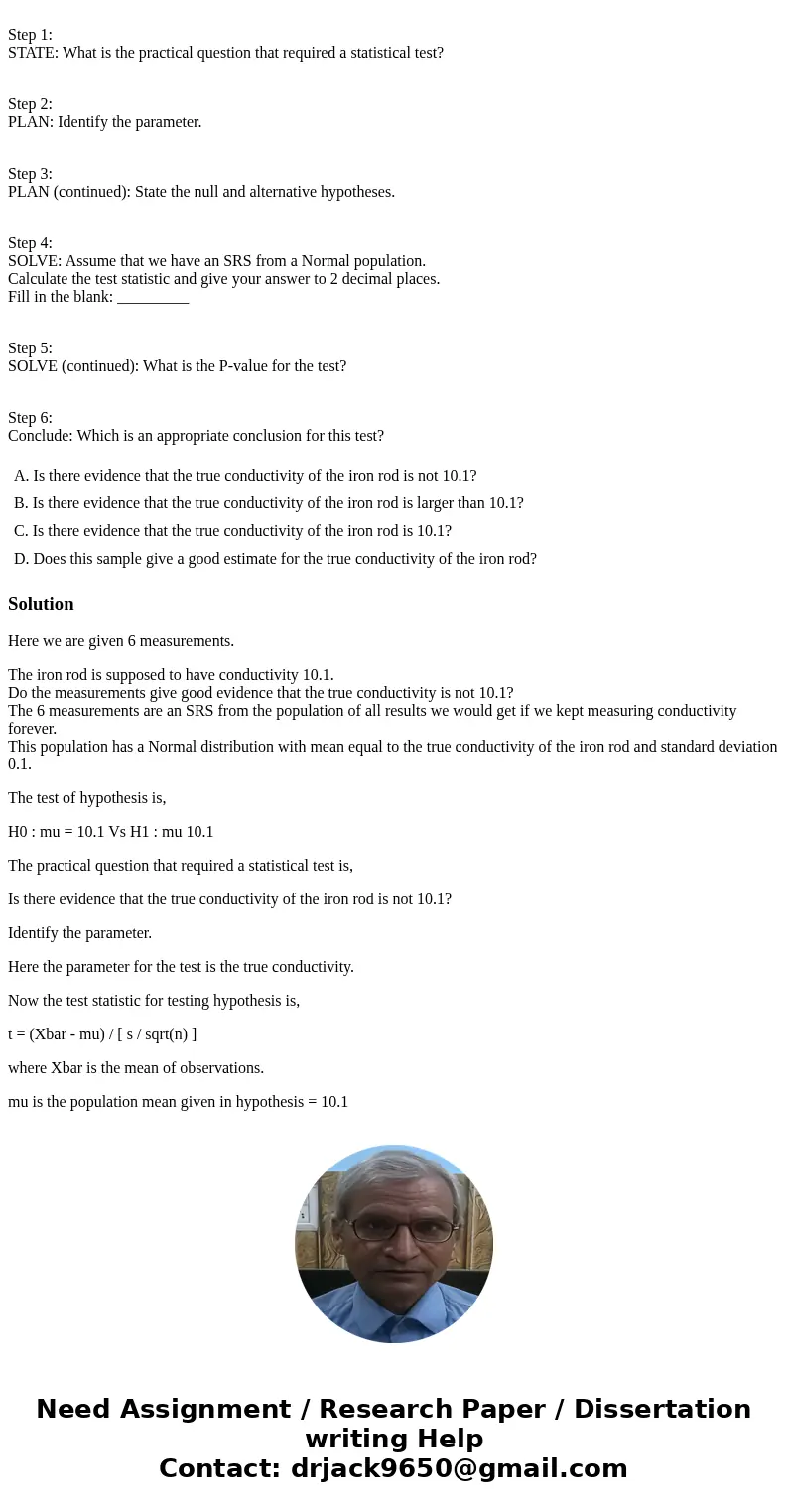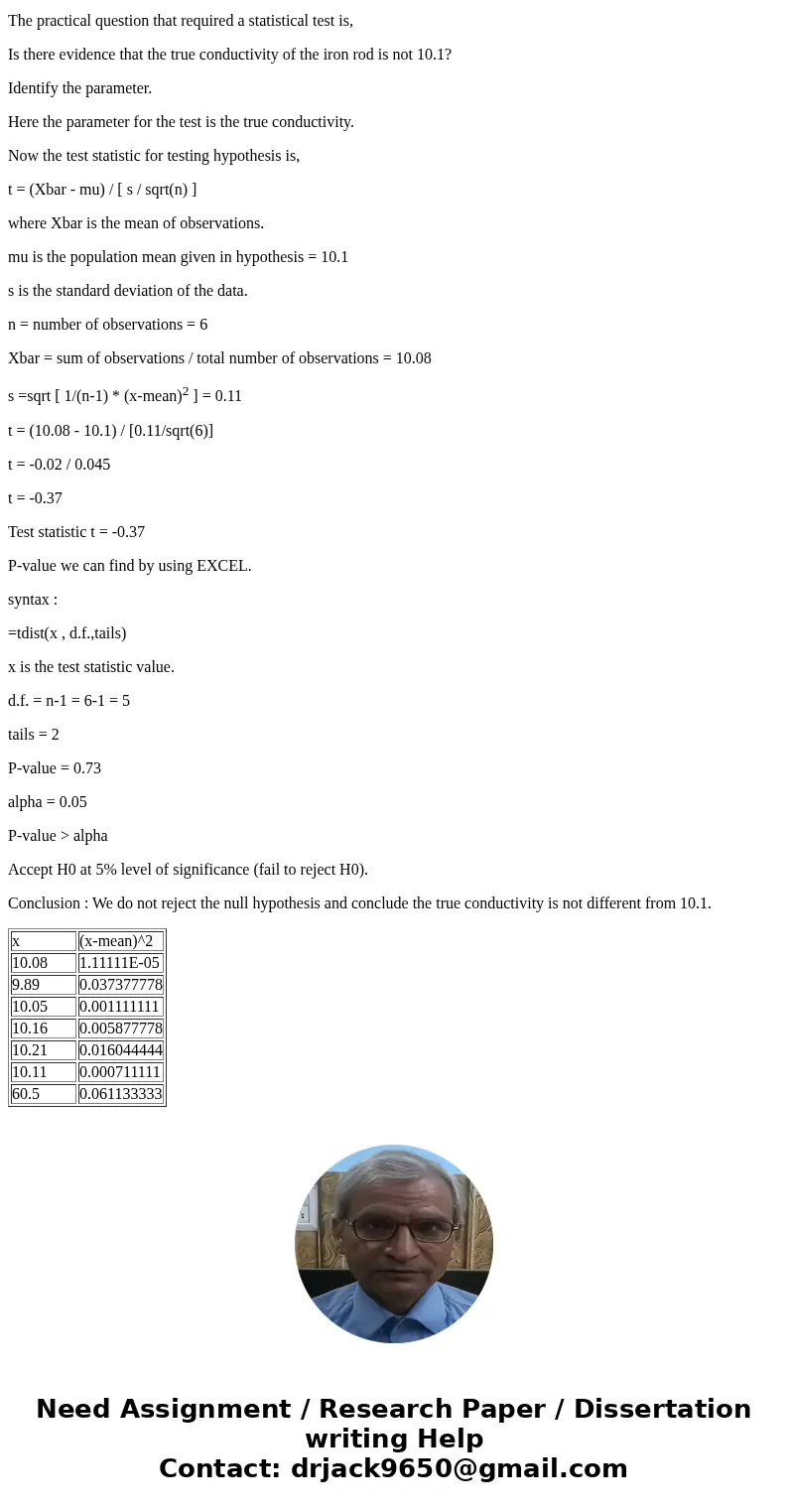Step 1 STATE What is the practical question that required a
Step 1:
STATE: What is the practical question that required a statistical test?
Step 2:
PLAN: Identify the parameter.
Step 3:
PLAN (continued): State the null and alternative hypotheses.
Step 4:
SOLVE: Assume that we have an SRS from a Normal population.
Calculate the test statistic and give your answer to 2 decimal places.
Fill in the blank: _________
Step 5:
SOLVE (continued): What is the P-value for the test?
Step 6:
Conclude: Which is an appropriate conclusion for this test?
| ||
| ||
| ||
|
Solution
Here we are given 6 measurements.
The iron rod is supposed to have conductivity 10.1.
Do the measurements give good evidence that the true conductivity is not 10.1?
The 6 measurements are an SRS from the population of all results we would get if we kept measuring conductivity forever.
This population has a Normal distribution with mean equal to the true conductivity of the iron rod and standard deviation 0.1.
The test of hypothesis is,
H0 : mu = 10.1 Vs H1 : mu 10.1
The practical question that required a statistical test is,
Is there evidence that the true conductivity of the iron rod is not 10.1?
Identify the parameter.
Here the parameter for the test is the true conductivity.
Now the test statistic for testing hypothesis is,
t = (Xbar - mu) / [ s / sqrt(n) ]
where Xbar is the mean of observations.
mu is the population mean given in hypothesis = 10.1
s is the standard deviation of the data.
n = number of observations = 6
Xbar = sum of observations / total number of observations = 10.08
s =sqrt [ 1/(n-1) * (x-mean)2 ] = 0.11
t = (10.08 - 10.1) / [0.11/sqrt(6)]
t = -0.02 / 0.045
t = -0.37
Test statistic t = -0.37
P-value we can find by using EXCEL.
syntax :
=tdist(x , d.f.,tails)
x is the test statistic value.
d.f. = n-1 = 6-1 = 5
tails = 2
P-value = 0.73
alpha = 0.05
P-value > alpha
Accept H0 at 5% level of significance (fail to reject H0).
Conclusion : We do not reject the null hypothesis and conclude the true conductivity is not different from 10.1.
| x | (x-mean)^2 |
| 10.08 | 1.11111E-05 |
| 9.89 | 0.037377778 |
| 10.05 | 0.001111111 |
| 10.16 | 0.005877778 |
| 10.21 | 0.016044444 |
| 10.11 | 0.000711111 |
| 60.5 | 0.061133333 |


 Homework Sourse
Homework Sourse